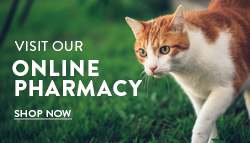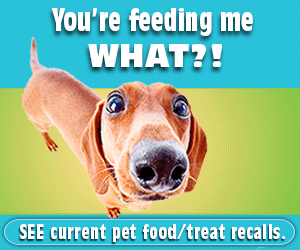|
The Pet Hospital of Penasquitos DOES NOT recommend Anesthesia Free Teeth Cleaning
The Pet Hospital of Penasquitos DOES NOT recommend anesthesia free teeth cleaning (also called cosmetic or awake teeth cleaning), offered by many groomers and mobile canine teeth cleaning services, for several reasons. First of all it is difficult, if not impossible, to properly clean the teeth in an awake animal. It takes us about 45 minutes to clean, polish and seal the teeth after the patient is anesthetized, all our monitoring equipment is attached and we are ready to start cleaning. No animal wants to be forcibly held down while you work in their mouth for 45 minutes, that's why we use anesthesia! Second the most important part of the teeth cleaning is to clean below the gum line. Numerous scientific studies have shown that cleaning only the visible surface of the teeth does not cure or prevent oral disease. The public may not understand that the procedures offered by unlicensed or unregulated persons are only cosmetic and do not improve tooth health. Thirdly, the California Veterinary Medicine Practice Act requires that an unlicensed person must be under the direct or indirect supervision of a veterinarian or under the direct supervision of a registered veterinary technician when performing tasks, such as a dental cleaning, and it must be in an animal hospital setting. There is no question cosmetic teeth cleaning is illegal in California unless done in a veterinary hospital under veterinary or veterinary technician supervision. Furthermore without ultrasonic scaling and polishing cosmetic teeth cleaning is not cleaning to improve tooth health even though it may look good. The SD County Veterinary Medical Association, CA Veterinary Medical Association, American Veterinary Medical Association, American Animal Hospital Association and the American Veterinary Dental College have all come out against anesthesia free teeth cleaning (see position statements listed following). Believe me if we could do it with the animal awake we would, but we can't. We urge you to not support illegal and poor quality care for your pet!
California Veterinary Medical Association Position Statement
Veterinarians, through sound clinical judgment and compliance with federal, state and local laws and regulations, are allowed to make medical decisions to protect the health and welfare of pets. Only a veterinarian has the education and clinical experience to perform or supervise a person performing a dental procedure on an animal patient.
Facts:
* California law restricts the practice of veterinary medicine to licensed veterinarians and persons under the supervision of licensed veterinarians.
* Veterinarians are medical doctors. They are educated to care for and protect the health of all animal species. Only veterinarians are licensed to provide medical care to animals, and are regulated by the state. Veterinary premises are also regulated and they must adhere to strict rules of animal safety
* The California Veterinary Medical Board has determined that the use of a dental instrument or device is the practice of veterinary medicine and can only be performed under the supervision of a veterinarian.
* A dental prophylaxis (cleaning), more appropriately termed a "Comprehensive Oral Health Assessment and Treatment", is a highly technical and invasive procedure. Non-motorized instruments, such as scalers, are sharp instruments and, even with the greatest of care, can lead to painful lacerations in the mouth.
* Improper use of a scaler can cause serious injury to sensitive gum tissue. Even a small nick or injury to the gum or soft tissue of the mouth can result in a systemic infection.
* People performing cosmetic cleanings, without veterinary supervision, are not licensed or certified by any state agency. If an animal is injured by an unlicensed or unregulated person, the public has no recourse. There will be no state agency to file a complaint with if an animal is injured or dies.
* Numerous scientific studies have shown that cleaning only the visible surface of the teeth does NOT cure or prevent oral disease. Clients may not understand that the procedures offered by unlicensed or unregulated persons are only cosmetic and may believe that their pet is healthy after the completion of a cosmetic cleaning. Without an examination by a veterinarian, tooth and gum disease may go undiagnosed resulting in serious health risks to the animal.
* Unlicensed and unregulated persons are not subject to even a minimum standard of cleanliness and sanitation, such as clean instruments that are sterilized between each animal. This creates a potential to transmit disease between animals by using contaminated instruments to clean an animal's teeth.
* The California Veterinary Medicine Practice Act requires that an unlicensed person must be under the direct or indirect supervision of a veterinarian or under the direct supervision of a registered veterinary technician when performing tasks, such as a dental cleaning, and it must be in an animal hospital setting.
* The California Veterinary Medicine Practice Act regulates the practice of veterinary medicine in California. It is enforced to protect consumer rights, the life and health of animals, and the integrity of veterinary medicine.
American Veterinary Dental College Position Statement
Companion Animal Dental Scaling Without Anesthesia
In the United States and Canada, only licensed veterinarians can practice veterinary medicine. Veterinary medicine includes veterinary surgery, medicine and dentistry. Anyone providing dental services other than a licensed veterinarian, or a supervised and trained veterinary technician, is practicing veterinary medicine without a license and shall be subject to criminal charges.
This position statement addresses dental scaling procedures performed on pets without anesthesia, often by individuals untrained in veterinary dental techniques. Although the term "Anesthesia-Free Dentistry" has been used in this context, AVDC prefers to use the more accurate term Non-Professional Dental Scaling (NPDS) to describe this combination.
Owners of pets naturally are concerned when anesthesia is required for their pet. However, performing NPDS on an unanesthetized pet is inappropriate for the following reasons:
1. Dental tartar is firmly adhered to the surface of the teeth. Scaling to remove tartar is accomplished using ultrasonic and sonic power scalers, plus hand instruments that must have a sharp working edge to be used effectively. Even slight head movement by the patient could result in injury to the oral tissues of the patient, and the operator may be bitten when the patient reacts.
2. Professional dental scaling includes scaling the surfaces of the teeth both above and below the gingival margin (gum line), followed by dental polishing. The most critical part of a dental scaling procedure is scaling the tooth surfaces that are within the gingival pocket (the subgingival space between the gum and the root), where periodontal disease is active. Because the patient cooperates, dental scaling of human teeth performed by a professional trained in the procedures can be completed successfully without anesthesia. However, access to the subgingival area of every tooth is impossible in an unanesthetized canine or feline patient. Removal of dental tartar on the visible surfaces of the teeth has little effect on a pet's health, and provides a false sense of accomplishment. The effect is purely cosmetic.
3. Inhalation anesthesia using a cuffed endotracheal tube provides three important advantages the cooperation of the patient with a procedure it does not understand, elimination of pain resulting from examination and treatment of affected dental tissues during the procedure, and protection of the airway and lungs from accidental aspiration.
4. A complete oral examination, which is an important part of a professional dental scaling procedure, is not possible in an unanesthetized patient. The surfaces of the teeth facing the tongue cannot be examined, and areas of disease and discomfort are likely to be missed. Safe use of an anesthetic or sedative in a dog or cat requires evaluation of the general health and size of the patient to determine the appropriate drug and dose, and continual monitoring of the patient. Veterinarians are trained in all of these procedures. Prescribing or administering anesthetic or sedative drugs by a nonveterinarian can be very dangerous, and is illegal. Although anesthesia will never be 100% risk-free, modern anesthetic and patient evaluation techniques used in veterinary hospitals minimize the risks, and millions of dental scaling procedures are safely performed each year in veterinary hospitals.
To minimize the need for professional dental scaling procedures and to maintain optimal oral health, the AVDC recommends daily dental home care from an early age. This should include brushing or use of other effective techniques to retard accumulation of dental plaque, such as dental diets and chew materials. This, combined with periodic examination of the patient by a veterinarian and with dental scaling under anesthesia when indicated, will optimize life-long oral health for dogs and cats.
Statement adopted by the AVDC Board
AAHA Dental Care Guidelines for Dogs and Cats - Dental Cleaning and Evaluation
Use well-monitored inhalation anesthesia with cuffed intubation when performing dental cleanings. These techniques increase safety, reduce stress, decrease the chances of adverse sequelae (e.g., inhalation pneumonia), and they are essential for thorough and efficient evaluation and treatment. Attempting to perform procedures on an awake patient that is struggling or is under sedation/injectable anesthesia reduces the ability to make an accurate diagnosis, does not allow adequate treatment, and increases stress and risks to the patient.
| 






